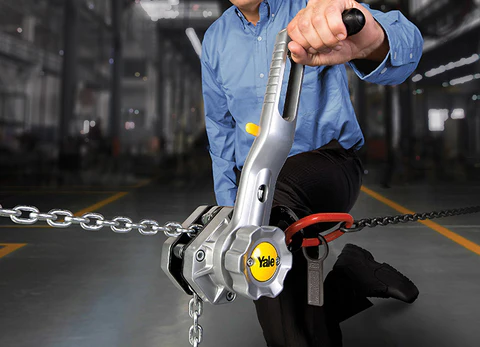When it comes to handling heavy loads safely and efficiently, the right lifting equipment is not just a convenience—it's a necessity. Whether you're working in construction, manufacturing, logistics, or any other industry that involves moving large or heavy items, selecting the proper tools can make all the difference in both productivity and safety. In this article, we’ll take a closer look at the different types of lifting equipment available and offer practical tips to help you choose the best options for your specific needs.

### Understanding Different Types of Lifting Equipment
Lifting equipment refers to a wide range of tools and machinery designed to lift, move, and lower heavy objects. Here are some of the most commonly used types:
- **Cranes**: These powerful machines are essential for lifting extremely heavy loads. They come in various forms, such as tower cranes, mobile cranes, and overhead cranes, each suited for different applications like construction sites, ports, and industrial facilities.
- **Hoists**: Hoists are mechanical devices that use a drum or wheel to lift and lower loads using rope or chain. They can be manual, electric, or air-powered and are often used in warehouses, factories, and maintenance areas.
- **Forklifts**: A staple in many industries, forklifts are ideal for lifting and transporting materials over short distances. They come in electric, diesel, and gas models, each with its own advantages depending on the environment and workload.
- **Winches**: Winches are used to pull or lift heavy objects by winding a cable or rope. They are commonly found in marine, automotive, and construction settings where controlled pulling or lifting is required.
- **Jacks**: Portable lifting devices, jacks are often used in automotive repair and industrial maintenance. Hydraulic, bottle, and floor jacks are among the most common types, each designed for different lifting tasks.

### Factors to Consider When Choosing Lifting Equipment
Selecting the right lifting equipment involves more than just picking the strongest tool. It requires careful evaluation of several key factors to ensure safety, efficiency, and long-term value. Here are some important considerations:
- **Load Capacity**: Always know the maximum weight you need to lift. Choose equipment that can handle slightly more than your heaviest load to account for unexpected variations.
- **Lift Height**: Determine how high the load needs to be lifted. Some equipment may have limitations, so it’s important to match the lift height to your requirements.
- **Environment**: Consider where the equipment will be used. For example, electric hoists are better for indoor use, while diesel-powered forklifts are more suitable for outdoor environments.
- **Frequency of Use**: If the equipment will be used daily, investing in durable, high-quality models is essential to avoid frequent breakdowns and downtime.
- **Mobility**: Decide whether the equipment needs to be portable or stationary. Mobile options like forklifts and mobile cranes offer flexibility, while stationary models like overhead cranes provide stability for repetitive tasks.
- **Safety Features**: Look for equipment that includes essential safety features such as overload protection, emergency stop buttons, and proper guarding to prevent accidents.
### Maintenance and Compliance
Regular maintenance is crucial to ensure that your lifting equipment remains safe and functional over time. Follow the manufacturer’s guidelines for inspections, servicing, and part replacements. Additionally, make sure your equipment complies with local safety regulations—such as LOLER in the UK or OSHA in the US—to avoid legal issues and maintain a safe working environment.
### Conclusion
Choosing the right lifting equipment is more than just about power—it’s about matching the right tool to the job. By understanding the different types of equipment available and considering factors like load capacity, environment, and safety, you can make an informed decision that enhances both efficiency and workplace safety. Don’t forget to prioritize regular maintenance and compliance with industry standards to keep your operations running smoothly and securely.
For more insights on the best lifting solutions and expert guidance on choosing the right equipment, visit Lifting365. Your partner in safe, efficient, and reliable lifting solutions.
Automotive Sensors For Changan,EV460 Automotive Electrical Components Changan,Tire Pressure Monitoring Sensor Ev460,Automotive Electrical Components Ev460
Chongqing Zhongheng Chuangxin Auto Parts Co., Ltd , https://www.zhcx-autoparts.com